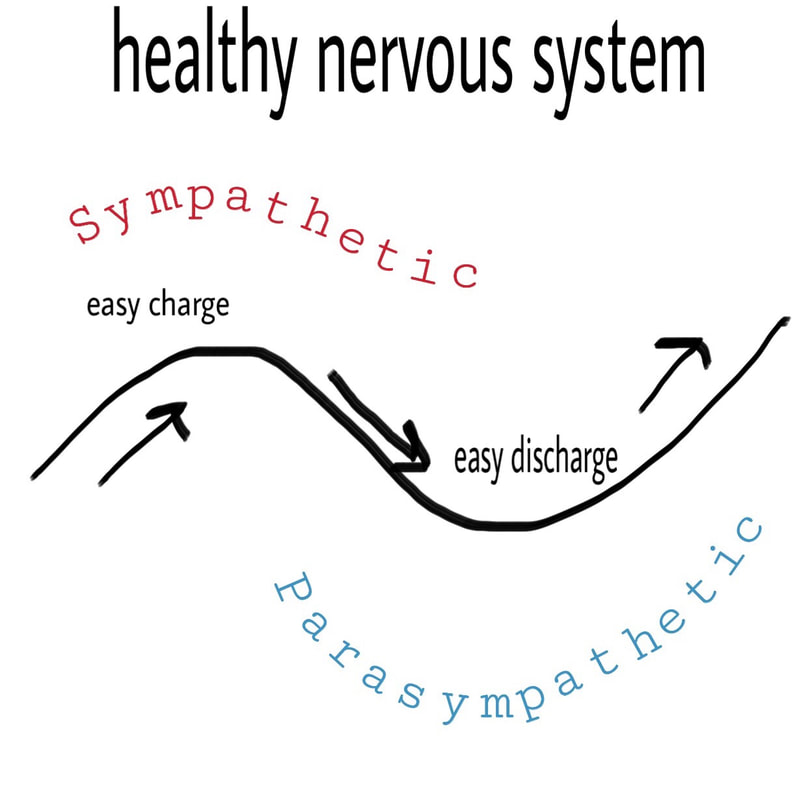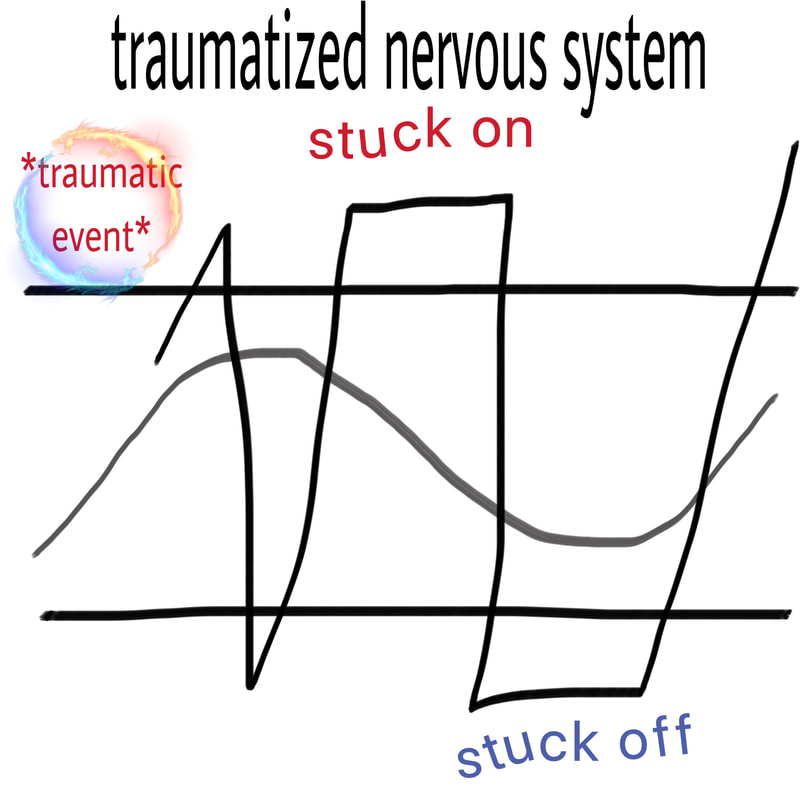How does somatic experiencing work?
Somatic Experiencing differs from other forms of therapy; it is not talk therapy but instead is a psychobiological and physiological approach that works with the nervous system. To understand how a mind-body therapy like SE™ works, first you must understand how the human nervous system works and what happens to the nervous system when we experience trauma.
So, what happens when humans are exposed to trauma? We have all heard of fight or flight, but there is another response that occurs, called freeze. These reactions are a result of our Autonomic Nervous System (ANS), which is split up into two parts, the Sympathetic Nervous System (SNS) and the Parasympathetic Nervous System (PNS).
What happens when the body determines it can neither fight or flee? The body freezes. Freezing, numbing, dissociating is a result of this self protection mechanism – the body slams on the emergency brake and immobilizes you, both mentally and physically. There are many biological reasons behind this – the person or animal attacking you may lose interest when you freeze or you may be less noticeable were you in the wild. Equally as importantly, the freezing allows you not to feel or to feel less intensely what is happening to you. This response is just as common as fight or flight, especially in children, who are not developmentally capable of protecting themselves in many ways.
So, what happens when humans are exposed to trauma? We have all heard of fight or flight, but there is another response that occurs, called freeze. These reactions are a result of our Autonomic Nervous System (ANS), which is split up into two parts, the Sympathetic Nervous System (SNS) and the Parasympathetic Nervous System (PNS).
- The PNS maintains our body when we are not under stress – it helps us rest – it is the brake pedal of the body. When the nervous system becomes overwhelmed, the freeze response occurs.
- The SNS is designed to protect the body when there is a perceived threat in the environment – when a threat is detected, our heart rate increases, our blood vessels constrict, our pupils dilate – it is the gas pedal of the body and activates our fight or flight response.
- First, it means that your body is making a split second decision on how it can BEST survive the dangerous situation.
- Second, it means that this is outside of your control. If your nervous system thinks you may have the power to defeat the aggressor, your body goes into fight mode, with your body pumping full of adrenaline. If the body things the situation is too powerful to be able to fight, it activates the flight response – turn and run!
What happens when the body determines it can neither fight or flee? The body freezes. Freezing, numbing, dissociating is a result of this self protection mechanism – the body slams on the emergency brake and immobilizes you, both mentally and physically. There are many biological reasons behind this – the person or animal attacking you may lose interest when you freeze or you may be less noticeable were you in the wild. Equally as importantly, the freezing allows you not to feel or to feel less intensely what is happening to you. This response is just as common as fight or flight, especially in children, who are not developmentally capable of protecting themselves in many ways.
Our nervous system is made to swing back and forth like a pendulum between a sympathetic state and a parasympathetic state. With those who have experienced trauma, your nervous system may get “stuck” on or off. Your body and mind learn that the world is a perpetually unsafe place, and so it holds on to the best way it knows to feel safe. Your nervous system may alternate between being stuck ON, which feels like anxiety and hypervigilance, constantly sensing danger, or stuck OFF, dissociated and hyperaroused, constantly unaware of your surroundings.
SE™ works with the symptomology that is held in the nervous system to resolve the trauma. Talk therapy and simply processing the event cannot fully access the adaptations the nervous system has made as a result of trauma. SE™ does not require re-telling or re-living the event but rather works to renegotiate physiological responses through tools like titration, tracking, pendulation, and resourcing.
SE™ works with the symptomology that is held in the nervous system to resolve the trauma. Talk therapy and simply processing the event cannot fully access the adaptations the nervous system has made as a result of trauma. SE™ does not require re-telling or re-living the event but rather works to renegotiate physiological responses through tools like titration, tracking, pendulation, and resourcing.
- Titration: working in a slow way with gradual exposure to the trapped arousal in the body. Similar to chemistry in which two volatile chemicals can only be introduced to one another one tiny drop at a time, when working with trauma we must break off small pieces to avoid overwhelming the nervous system and allow for integration of regulation.
- Tracking: SE™ work can feel like learning a new language as you begin tracking the sensations in your body. The same way you can know your thoughts, you will learn to know your body and become aware of the responses there. Over time, this will lead to more capacity to stay present to what you are experiencing and increase resiliency.
- Pendulation: with pendulation, we move between charge/arousal and small amounts of traumatic material to a more calm, resilient state, to allow your body to begin to re-learn the natural pendulation present in a healthy nervous system state.
- Resourcing: resourcing and grounding are ways to establish stability and safety by becoming aware of neutral and positive body sensations. By working with resourcing, you being to trust your body and have more access to life force, connection with self and others, and empowerment. Resourcing is a critical piece of the work because it gives you a grounded state to be in when working with traumatic experiences.

